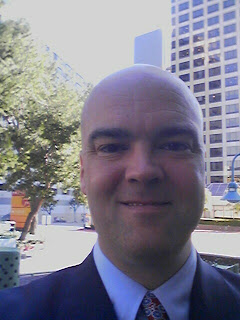The point of the exercise was to identify exactly when a seasoned player knew where the ball would head. (Damian) Farrow established five possible windows: First, he blackened the goggles just as the ball's flight path over the net was determined; second, as the server's racket made contact with the ball. Then he gave players less and less information — cutting off the image when the server's arm was cocked, as it was being drawn back, and, finally, at the very start of the toss.Dr. Farrow is an Australian sports scientist who is a pioneer in the study of "field sense," the ability, long thought to be innate, of an athlete to perceive his surroundings during a game. Read the whole thing.
Not surprisingly, receivers were better at guessing the ball's direction the later their vision cut out. But the results also revealed something more interesting. Graphs of the amateurs' reactions showed that they could anticipate where the ball would go only if they witnessed the racket making contact with it. Experts knew what would happen roughly a third of a second earlier, when the server's cocked arm was still unfolding.
What happened in that fraction of a second? A lot, Farrow reasoned. Up to a point, he theorized, the direction of a serve was fundamentally unpredictable: Whatever clues existed weren't ones that an opposing player could discern. By the time the ball had been hit, on the other hand, even a novice could make a plausible guess at its trajectory. What separated the pros from everyone else was the ability to pull directional information out of the early stages of a swing and therefore to predict a split second earlier where to head. This fraction of time is game- changing. A serve going 120 miles per hour takes approximately a third of a second to travel the 60 feet from baseline to service line. This means that an expert, who doesn't have to wait until contact, has twice as long to move, plant his feet, and swing.
This discovery fit with something Farrow and other tennis researchers had already suspected: Reflex speed is not the key factor in returning a serve. "People have tested casual players and experts, and their reaction times are essentially the same," Farrow says. The fact that Roger Federer can drill back a 140-mile-per-hour serve is partly a matter of muscle control. But it's also about processing subtle visual cues to predict where the ball will go and get to the right spot.
June 06, 2007
Something to think about when watching Wimbledon, or for that matter, any other professional sporting event:
Subscribe to:
Post Comments (Atom)
 Més que -- un blog
Més que -- un blog 
No comments:
Post a Comment